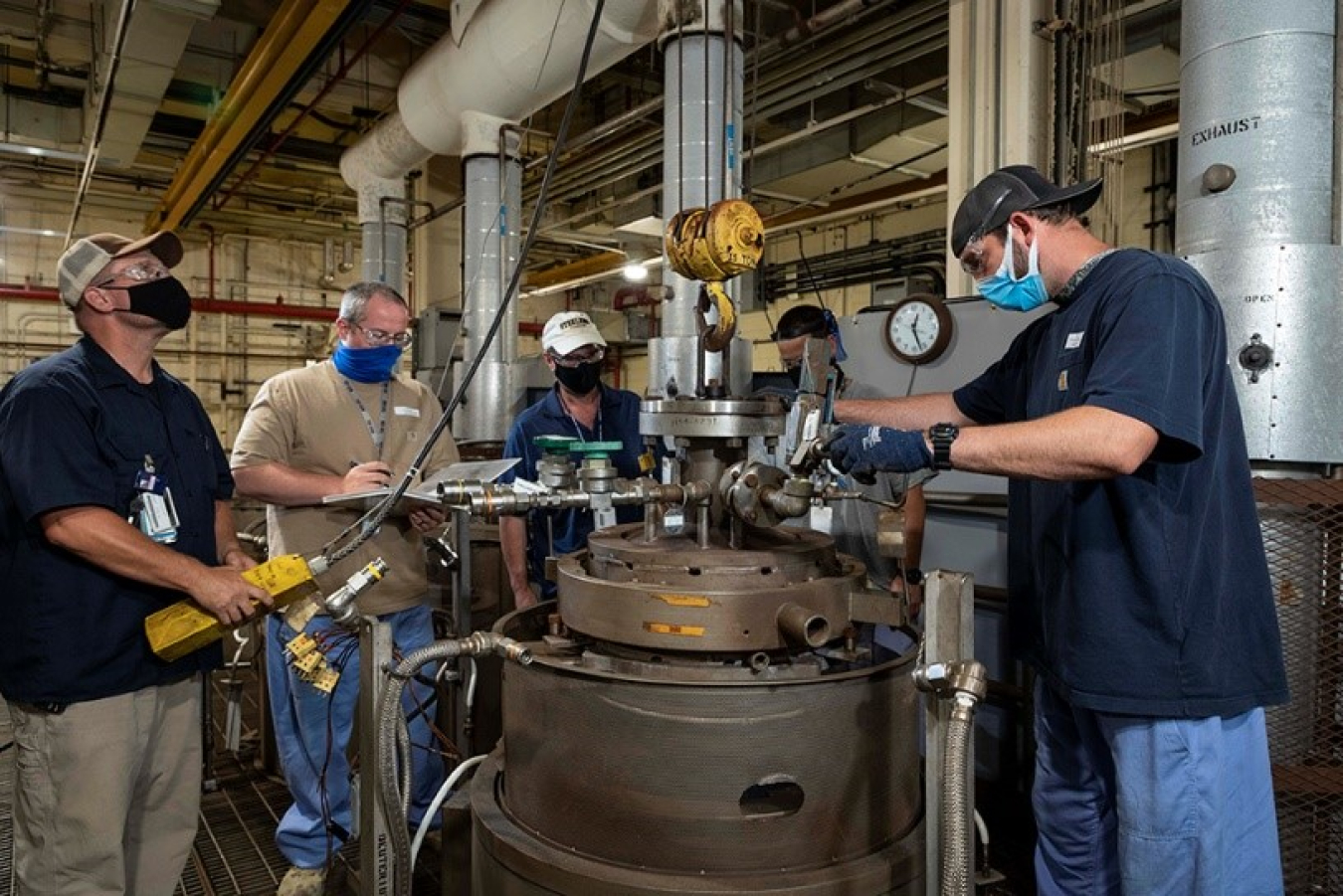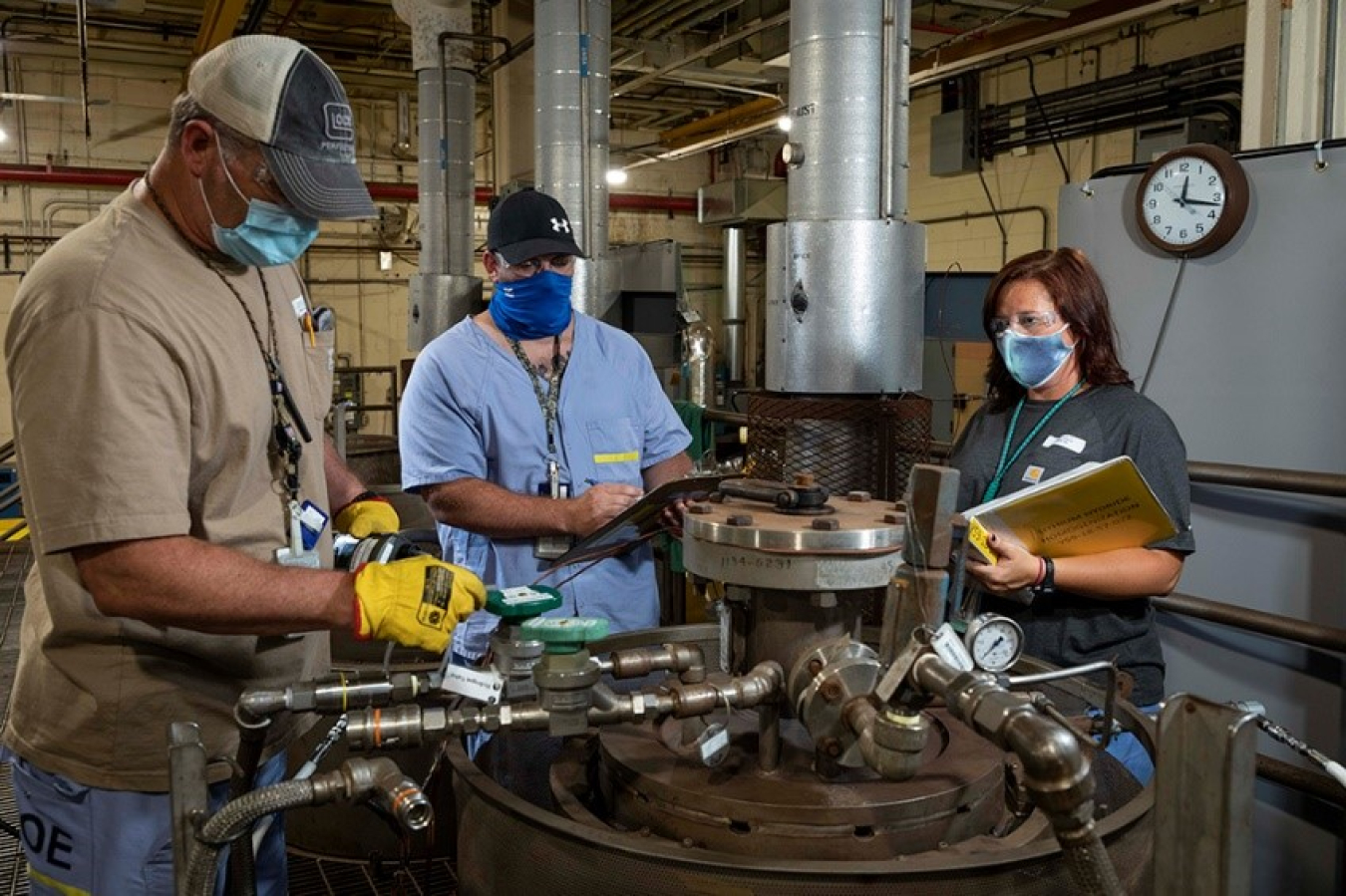The science behind baking a cake is at work at NNSA’s Y-12 National Security Complex.
National Nuclear Security Administration
October 15, 2020
The science behind baking a cake is at work at NNSA’s Y-12 National Security Complex. Homogenization technology developed by scientists and engineers at Y-12 involves a large oven and the mixing of ingredients – lithium materials in this case. When the ingredients are baked in the oven, the result is a uniform lithium hydride product — similar to a cake.
Lithium hydride is essential for refurbishing and modernizing the Nation’s nuclear weapons stockpile. NNSA is the sole supplier of lithium materials to support U.S. defense missions.

NNSA recently approved the homogenization technology, a streamlined process for recycling lithium parts, in the basic design of the proposed Lithium Processing Facility (LPF) to be built at Y-12. The technology would improve worker safety, increase efficiency of existing lithium part manufacturing, improve product consistency, and, over time, reduce operating costs.
After Y-12 successfully demonstrated a small-scale prototype of the homogenization technology, a team from Los Alamos and Lawrence Livermore National Laboratories assessed and confirmed the viability of the technology with the help of experts from across the Nuclear Security Enterprise.
Next step: Maturing the technology
While receiving approval for the process to be included in the basic design for the LPF is an accomplishment, there is still significant work needed to advance the technical and manufacturing readiness of the technology.
Homogenization is about using recycled lithium material from multiple sources and producing a consistent product to make parts ... The more consistent the product, the more confident the weapons design labs are in qualifying our work.
NNSA and Y-12 will modify the process before it is incorporated into the Facility’s final design. Scientists and engineers continue working to successfully operate the homogenization furnace and process in the full production environment.
A capability for the Nation
In addition to homogenization, experts are investigating other technologies to improve the safety and efficiency of making lithium hydride.
“There are a limited number of chances to make big changes in the way we work,” said Hampton. “Manufacture of lithium hydride parts is something only NNSA does – and we need to make this material for the next 50 years. The safety of our workforce, the engineering of our processes, and the quality of our product will be our legacy.”
The LPF, which would come online by 2031, would replace the 1940s-era building where lithium operations currently take place.
Learn more about NNSA’s mission to maintain the U.S. nuclear stockpile.

